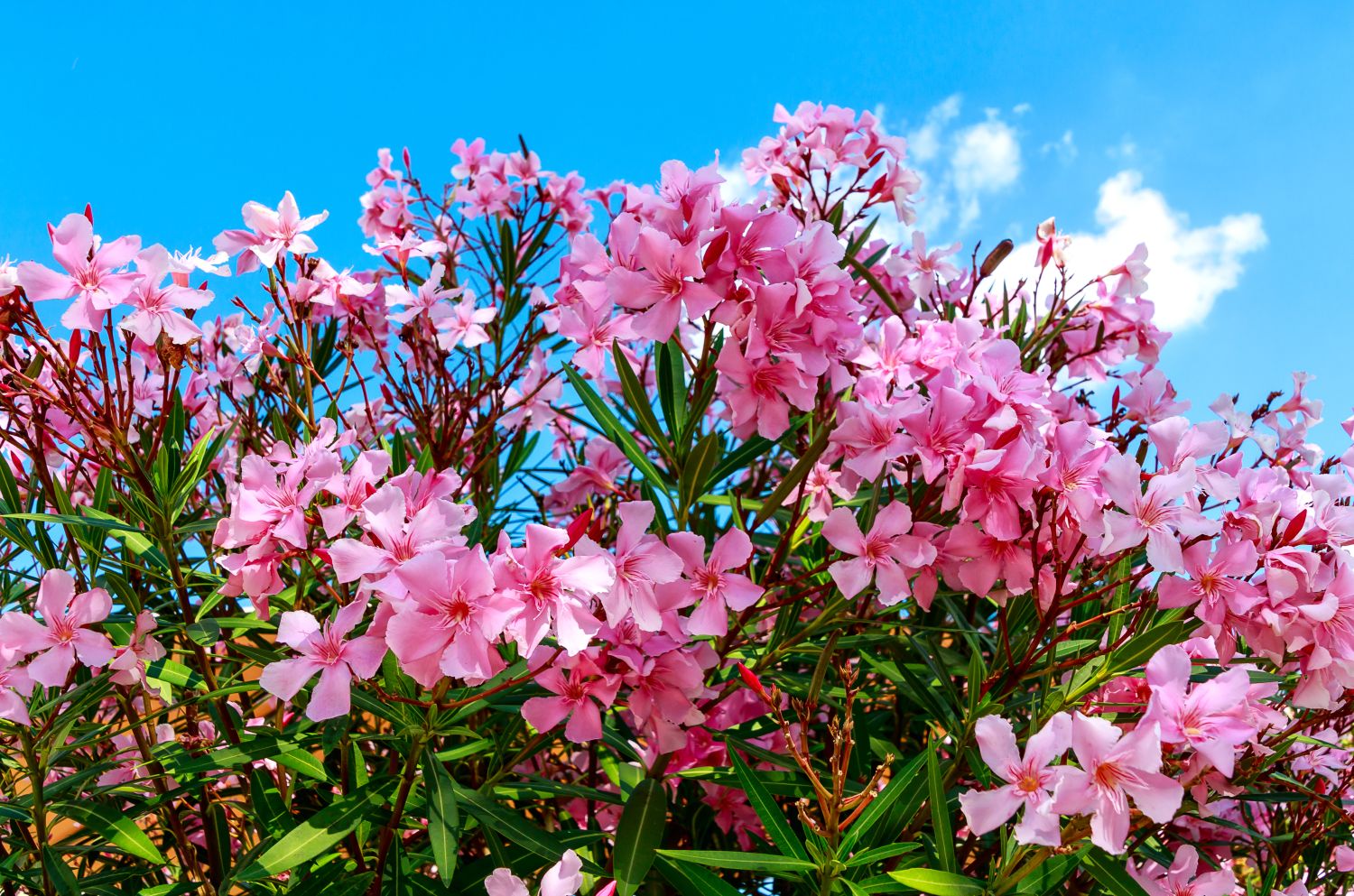The Oleander, or Nerium oleander, is a lovely but potentially deadly evergreen shrub that has been grown as an ornamental plant since antiquity. It is a popular addition to many gardens due to its gorgeous tubular blossoms and may grow up to 6 meters tall. It is distinguished by its short, lanceolate leaves, which grow in groups of three.
One fascinating aspect about the Oleander is that when the stem is cut, a sticky latex is secreted. In the natural, the blooms are normally red or pink, although cultivars come in a variety of hues, including white, cream, yellow, and purple. Double varieties have also been chosen, and some are even perfumed. The opening of this flower creates a Star of David, which is interesting.

The Oleander fruit is made up of two follicles that split along one side to release the oblong seeds, which have a plume of hairs at one end. Although this plant is a lovely addition to any garden, it is vital to know that it is very toxic and dangerous in all parts. During his military expeditions, Alexander the Great is said to have lost men as a result of eating meat impaled on very deadly Nerium twigs.

The Mediterranean area, Iran, the Indian subcontinent, and southern China are all home to the Oleander. It grows in a range of environments, including rocky slopes and dry streambeds, and likes warm climes.

Despite its toxicity, the Oleander has long been valued in many civilizations. In Istria, a traditional meal called manestra is cooked from Oleander leaves. If a husband was unfaithful, his wife would prepare him manestra with Oleander leaves, according to folklore. While there have been no records of anyone being poisoned by Oleander in this fashion, the mythology remains interesting.

If you want to add an this flower to your garden, make sure you handle it carefully and keep it out of the reach of children and dogs. While it is a lovely and intriguing plant, its toxicity should not be underestimated. An Oleander, with appropriate care and attention, can be a wonderful addition to any garden, adding a touch of beauty and magic.






